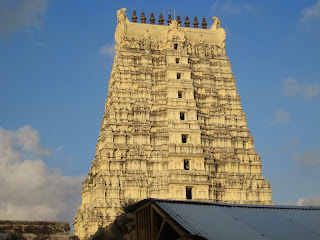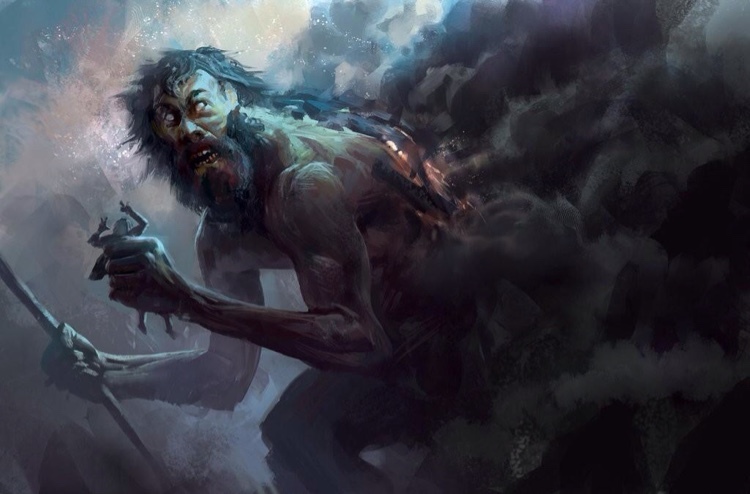India is the seventh largest (by area) and the second most populous country in the world, with roughly one-sixth of its population, of about a billion and a quarter. It is the world's largest democracy. It is one of the world's oldest civilizations yet, a very young nation. Elections to its Parliament are held once every 5 years.
RELIGION
Religion as a major cultural influence plays an important role in politics. Political party support depends greatly on differentiating the electorate along religious lines. The major religious communities are those of the Hindus (although not a homogeneous block), the Muslims (again they too are differentiated as Shias and Sunnis) and the Sikhs; and many political parties are identified by the religion of their supporters. Many national religious issues are the key points of the success in elections. Even some of the political leaders use religion for their own sake and as a medium for their political stability.
Population
India is a second most populated country in the world, next only to China. The over a billion population poses a challenge to the state's ability to provide everyone with jobs, health-care, education and other public services. Slowing down the rate of population growth has been a major issue for governments, over time. India being a democratic country the ever increasing population can only be checked by voluntary means, with the informed consent of the people.With the current growth rate, India is set to leave China behind by 2020.
Development
India is still an emerging economy, setting the pace and shape of development. India began as an explicitly socialist nation and continues with a large public-sector and many constraints on private enterprise, although recent governments have reduced some of these restrictions. Their reward has been faster economic growth, particularly through the growth of trade-oriented industry. Some recent governments were voted out due to a sluggish economy.Factors such as education, corruption, women's issues, student politics, criminalization of politics, leadership strategies and the design of political institutions affect national and local politics.
TAJ MAHAL- WONDER OF THE WORLD
The Taj Mahal is a white marble mausoleum located in Agra, Uttar Pradesh, India. It was built by Mughal emperor Shah Jahan in memory of his third wife, Mumtaz Mahal. The Taj Mahal is widely recognized as "the jewel of Muslim art in India and one of the universally admired masterpieces of the world's heritage".
Taj Mahal is regarded by many as the finest example of Mughal architecture, a style that combines elements from Islamic, Persian, Ottoman Turkish and Indian architectural styles.
In 1983, the Taj Mahal became a UNESCO World Heritage Site. While the white domed marble mausoleum is the most familiar component of the Taj Mahal, it is actually an integrated complex of structures. The construction began around 1632 and was completed around 1653, employing thousands of artisans and craftsmen.The construction of the Taj Mahal was entrusted to a board of architects under imperial supervision, including Abd ul-Karim Ma'mur Khan, Makramat Khan, and Ustad Ahmad Lahauri. Lahauri is generally considered to be the principal designer.
TEMPLES- WONDERS OF THE UNIVERSE
 |
| Mahadev temple |
 |
| Palani Temple |
 |
| Madurai Temple |
 |
| Ramanathaswamy Temple |
 |
| Rameshwaram Temple |
 |
| Kedarnath |
 |
| Brihadeshwara Temple |
 |
| Bhaidyanath Temple |
 |
| Kasi Viswanath Temple |
 |
| Gangotri Temple |
 |
| SriPadmanabhaswamy Temple- World's Richest Temple |
REGIONS
 |
| Himalayas- Ice lands |
 |
| Desert |
 |
Munnar- Green land |
NATIONAL ANIMAL
 |
| Tiger |
NATIONAL BIRD
 |
PeacockFORM OF GOVERNMENT
DEMOCRACY is a form of government in which all eligible citizens participate equally—either directly or through elected representatives—in the proposal, development, and creation of laws. It encompasses social, economic and cultural conditions that enable the free and equal practice of political self-determination.
|
PRESENT POLITICS>>>
 |
| A drawing by Swami Nalanda, indicating the results of recent Voting status |
WATER BODIES OF INDIA
The major and most important rivers in India are Ganga, Yamuna, Godavari, Saraswati, Narmada, Sindhu and Kaveri
GANGA- The most holy river
The story begins with a sage, Kapila, whose intense meditation has been disturbed by the sixty thousand sons of King Sagara. Livid at being disturbed, Kapila sears them with his angry gaze, reduces them to ashes, and dispatches them to the next world. Only the waters of the Ganga, then in (heaven, can bring the dead sons their salvation. A descendant of these sons, King Bhagiratha, anxious to restore his ancestors, undertakes rigorous penance and is eventually granted the prize of Ganga's descent from heaven. However, since her turbulent force would also shatter the earth, Bhagiratha prays to God of Gods, God Shiva in his abode on Mount Kailash to receive Ganga in the coils of his tangled hair and break her fall. Ganga descends, is tamed in Shiva's locks, and arrives in the Himalayas. She is then led by the waiting Bhagiratha down into the plains at Haridwar, across the plains first to the confluence with the Yamuna at Prayag and then to Varanasi, and eventually to Ganga Sagar, where she meets the ocean.
 |
| Descent of Ganga |
The Ganges is a trans-boundary river of India and Bangladesh. The 2,525 km (1,569 mi) river rises in the western Himalayas in the Indian state of Uttarakhand, and flows south and east through the Gangetic Plain of North India into Bangladesh, where it empties into the Bay of Bengal. It is the third largest river in the World by discharge.The Ganges is a sacred river to Hindus along every fragment of its length. All along its course, Hindus bathe in its waters, paying homage to their ancestors and to their gods by cupping the water in their hands, lifting it and letting it fall back into the river; they offer flowers and rose petals and float shallow clay dishes filled with oil and lit with wicks (diyas). On the journey back home from the Ganges, they carry small quantities of river water with them for use in rituals (Ganga jal, literally water of the Ganga).When a loved one dies, Hindus bring the ashes of the deceased person to the Ganges River.
 |
| Worshiping the River |
The Ganges is the most sacred river to Hindus and is also a lifeline to millions of Indians who live along its course and depend on it for their daily needs. It is worshipped as the goddess Ganga in Hinduism.It has also been important historically: many former provincial or imperial capitals. Its said that the river contains more oxygen content than any other river on earth and its micro-organisms decay waste materials at fast rate.
The Yamuna sometimes called Jamuna (Hindi: जमुना) or Jamuna, is the largest tributary river of the Ganges(Ganga) in northern India. Originating from the Yamunotri Glacier at a height of 6,387 metres on the south western slopes of Banderpooch peaks in the uppermost region of the Lower Himalayas in Uttarakhand, it travels a total length of 1,376 kilometers (855 mi) and has a drainage system of 366,223 square kilometres (141,399 sq mi), 40.2% of the entire Ganges Basin, before merging with the Ganges at Triveni Sangam, Allahabad, the site for the Kumbha Mela every twelve years.
Kumbh Mela is a mass Hindu pilgrimage of faith in which Hindus gather to bathe in a sacred river. It is considered to be largest peaceful gathering in the world with over 100 million people visiting during the Maha Kumbh Mela in 2013.
 |
| Kumbh Mela |
It is held every third year at one of the four places by rotation: Haridwar, Allahabad (Prayaga),Nashik and Ujjain. Thus the Kumbh Mela is held at each of these four places every twelfth year. Ardha ("Half") Kumbh Mela is held at only two places, Haridwar and Allahabad, every sixth year. The rivers at these four places are: the Ganges (Ganga) at Haridwar, the confluence (Sangam) of the Ganges and the Yamuna and the mythical Saraswati at Allahabad, the Godawari at Nashik, and the Shipra at Ujjain.
 |
| River Worship |
The Godavari is a river in the south-central India. It starts in the western state of Maharashtra and flows through the southern state Andhra Pradesh before reaching the Bay of Bengal. It forms one of the largest river basins in India. With a length of 1465 km, it is the second longest river in India, after the The Ganges, and the longest in southern India. It originates near Trimbak in NashikDistrict of Maharashtra state. It flows east across the Deccan Plateau into the Bay of Bengal near Yanam and Antarvedi in East Godavaridistrict of Andhra Pradesh.
The Sarasvati River is one of the main Rigvedic rivers mentioned in ancient Sanskrit texts. The Nadistuti hymn in the Rigveda (10.75) mentions the Sarasvati between the Yamuna in the east and the Sutlej in the west, and later Vedic texts like Tandya and Jaiminiya Brahmanas as well as the Mahabharata mention that the Sarasvati dried up in a desert.
The identification of the Vedic Sarasvati River with the Ghaggar-Hakra River was accepted by a number of scholars already in the 19th and early 20th century, including Christian Lassen,[1] Max Müller,[2] Marc Aurel Stein, C.F. Oldham[3] and Jane Macintosh,while Rajesh Kochhar believes that the Helmand River of southern Afghanistan corresponds to the Sarasvati River. According to proto-historian Michel Danino, in ancient times a mature river flowed into the Ghaghar Akra valley and into the Rann of Kutch, which he identifies as the Rig Vedic Sarasvati river.
 |
| Kumbha Mela |
The Narmada also called the Rewa, is a river in central India and the fifth longest river in the Indian subcontinent. It is the third longest river that flows entirely within India, after the Godavari and the Krishna. It forms the traditional boundary between North India and South India and flows westwards over a length of 1,312 km (815.2 mi) before draining through the Gulf of Khambhat into the Arabian Sea, 30 km (18.6 mi) west of Bharuch city of Gujarat.
The Sindh River, a tributary of the Yamuna River, flows through the Indian states of Madhya Pradesh and Uttar Pradesh.
The Kaveri, also spelled Cauvery in English, is a large Indian river. The origin of the river is traditionally placed at Talakaveri, Kodagu in the Western Ghats in Karnataka, flows generally south and east through Karnataka and Tamil Nadu and across the southern Deccan plateau through the southeastern lowlands, emptying into the Bay of Bengal through two principal mouths.
A shloka before going for BATH, take some water and recite the Shloka below>>>
| " | |
| Gange cha Yamune chaiva Godavari Saraswati, Narmade Sindhu Kaveri jalesmin sannidhim kuru" | |
| Meaning---In this water, I invoke the presence of holy waters from the rivers Ganga, Yamuna, Godavari, Saraswati, Narmada, Sindhu and Kaveri |







.jpg)







Comments
Post a Comment